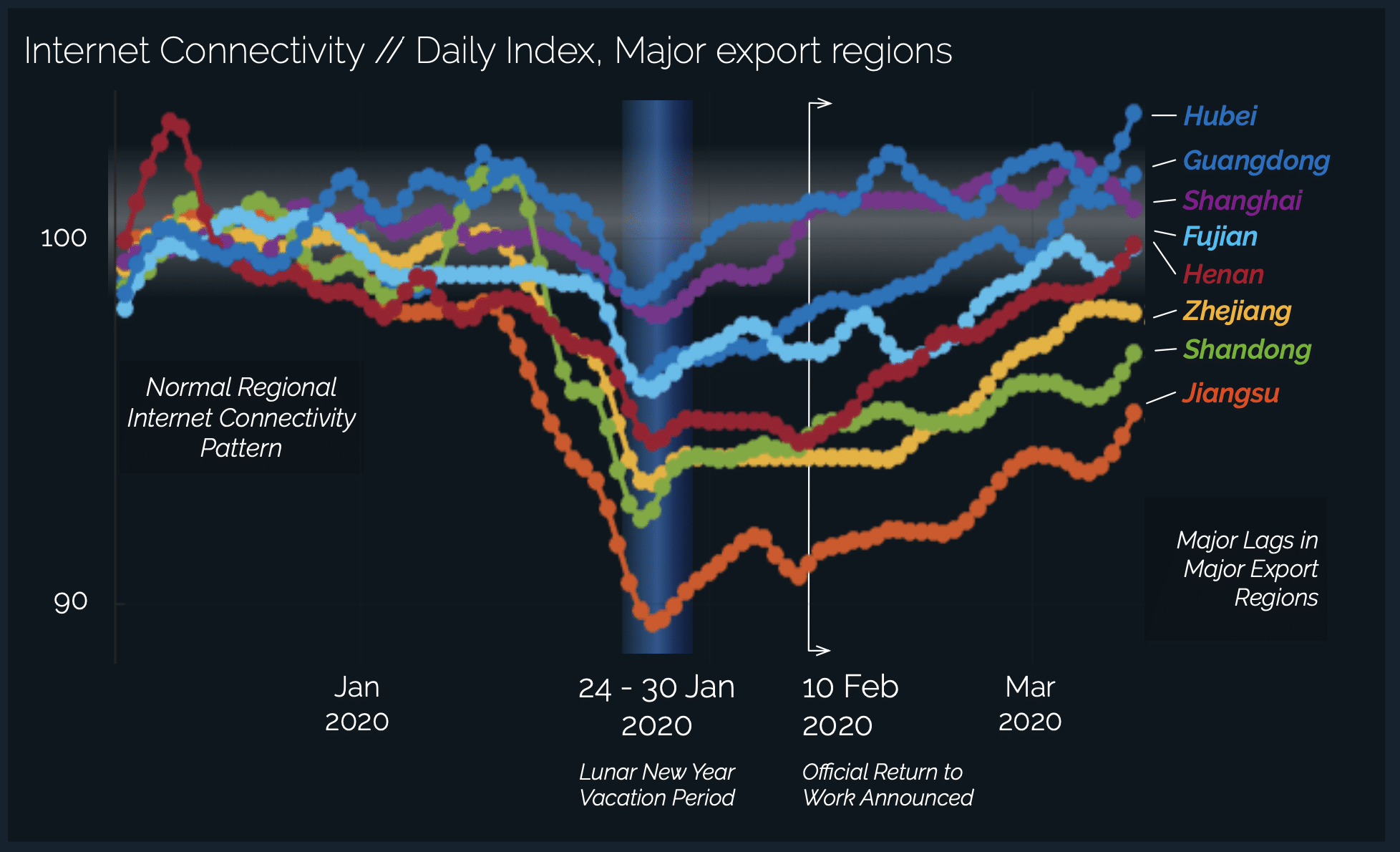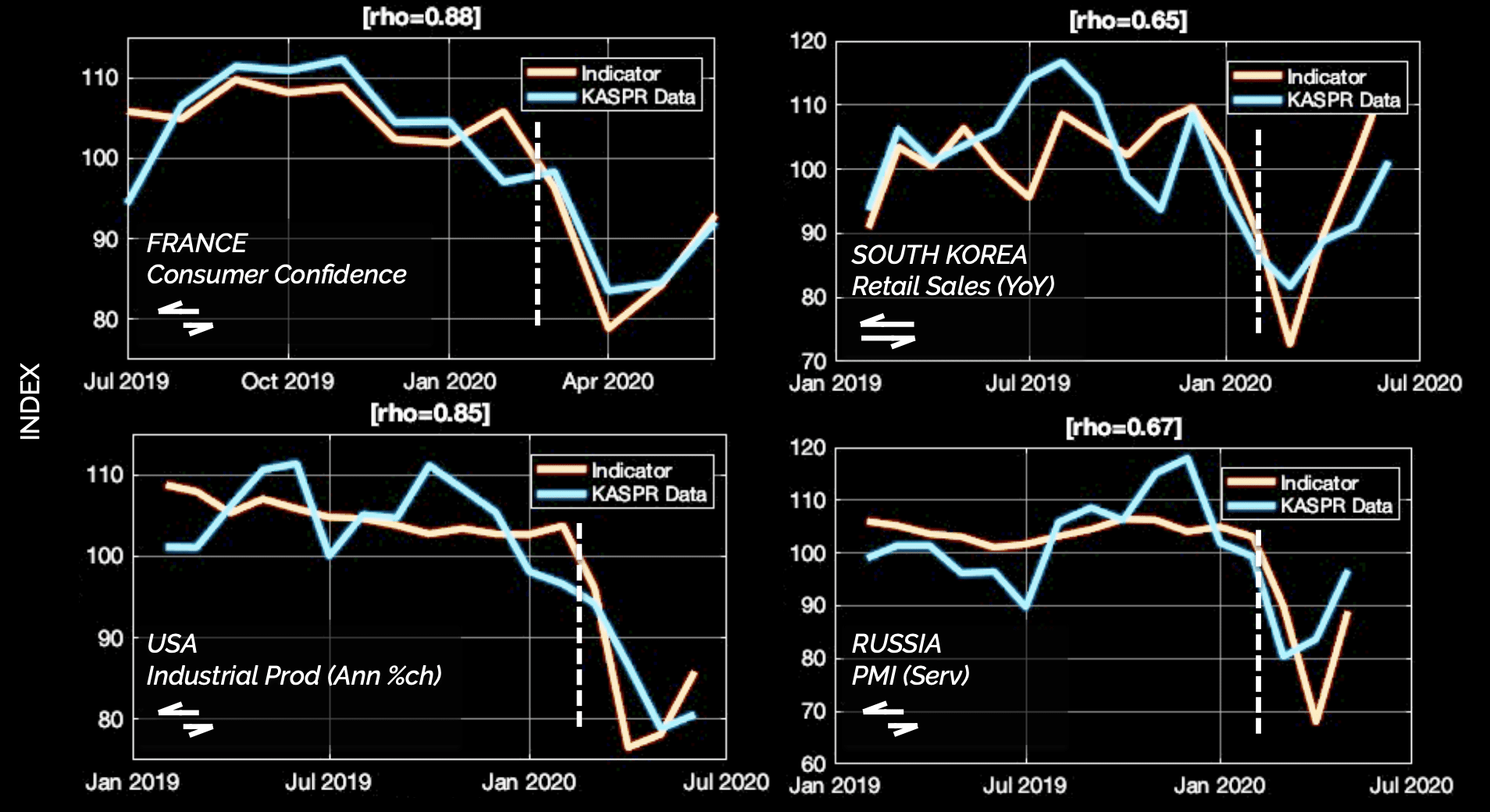KASPR Datahaus monitors the diffusion of the global Internet at an unprecedented level of temporal and spatial granularity.

- Monthly data on the number of unique IP addresses per capita for around 18,000 subnational localities (i.e. counties, districts)
- Spatial Coverage: Global
- Temporal Coverage: Since June 2018
- Monthly updates
- Compare the quality and stability of local Internet between districts and over time.
In the age of the Internet of Things (IoT), changes in Internet penetration and quality capture changes in private consumption, investment as well as government expenditure.
Potential Applications:
- Predicting changes in economic activity at monthly frequency for localities around the world.
- Evaluate the impact of significant ICT back-bone infrastructure investments
Case Study: The Impact of covid19 on Chinese Provinces
Using KASPR Daily ADM1 Internet Intel data, we anaylsed the impact of the covid19 onset, and the subsequent recovery for 8 of China’s most export-intensive provinces.
Figure 1 shows the variation in actively measured internet connections are converted into an index by averaging over a baseline period (Dec 2019 – Jan 2020), with normal statistical variation developed by standard variance estimation on the baseline period.

Case Study: Predicting Key Economic Indicators with KASPR Global ADM0 Internet Intel Data
In this analysis we visually examine the correlation between KASPR ADM0 (country-level) Internet Intel data and key economic lead indicators such as
- the Purchsing Managers index (PMI)
- Industrial Production
- Consumer Confidence and
- Retails Sales

For consistency, monthly aggregates of Internet observations in each country, along with the given economic indicator, are transformed to z- scores, x 10, and brought to a baseline of 100.
Note: Internet traces are formed on monthly aggregates before economics Indicator numbers are released.
